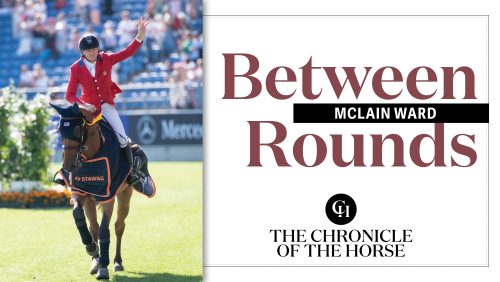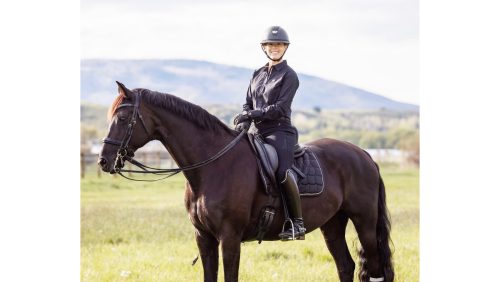If you’ve ever thought being a judge sounded glamorous, take a look behind the curtain to see if the hard work and dedication is really for you.
The original judges’ learners program for dressage was launched in the late 1970s and has been added to, refined and tweaked over the years. Lois Yukins, who headed the U.S. Dressage Federation Judges Council for many years, and Marianne Ludwig, who created and has helped maintain the present U.S. Equestrian Federation educational system for our American judges, updated me on the yellow brick road to “judge-dom” as it looks today.
The USDF provides a starter kit in the learner or “L” program. Anybody interested in how judging works from the very roots of the program can, for a fee, be an auditor at Part 1 of the “L” program.
But it’s serious business for those interested in becoming a recognized judge. Those candidates have to apply for Part 2 of the “L “ program, which requires three minimum scores at second/third level. This USDF function was developed to such a high standard that the USEF made it a requirement for a candidate to pass the “L” program in order to be admitted to its “r” (registered judge) sessions. As of April 15, 2015, the participants have to pass Part 2 of the “L” program with a minimum percentage of 72 on the practical exam and 85 on the written test to be admitted to the USEF accreditation program.
This is the entry level, which requires attendance at educational seminars, sit-ins, practice judging supervised by a licensed judge and a written, practical and oral exam. The normal time period from start to finish is 10 to 12 months and can involve considerable time and cost in travel, depending on where you live.
The “r” status allows judging through second level. Once a person becomes a registered judge, there is a minimum requirement of four shows judged every two years to maintain the license plus more practice judging and testing before one can move on to becoming an “R” (recorded) judge, which allows judging through fourth level.
The time taken to complete this step is about two years, and even if a person can move along faster, he or she cannot apply to be promoted before working as an “r” for a minimum of two years. And so it goes on at the “R” level as well, before one can apply to become an “S” (senior) judge which is the highest rank possible in the United States.
With an “S” rating a judge can officiate at all levels through Grand Prix. An important feature is that along with the formal learning, each judge has to demonstrate experience showing at the level they judge. I think that was one of the most important of many improvements in our programs when it was introduced as a requirement, and the minimum requirement for the rider scores is periodically being raised.
Are you still with me? The usual time period between achieving the license to judge and becoming an “S” judge is between eight and 10 years, and the cost can be considerable. So it is not by accident that our American judges are well educated, committed and passionate about their work. As a matter of fact, we were way ahead of the rest of the world in judges’ education for many years, and other countries have modeled their programs after ours.
ADVERTISEMENT
To keep our judges in shipshape order there are obligatory seminars to attend, at a minimum every three years, and there are also tests required on USEF rules, which tend to change to some degree on a yearly basis.
Age And Experience
The last step, for judges who are not already exhausted, is to try to become an FEI judge, allowing them to judge internationally. The Fédération Equestre Internationale has similar requirements but not quite as intense since all judges applying for an FEI license must be approved by their federation, and the majority already have considerable experience as judges.
Few judges become FEI judges until their middle age. The upper limit for applying used to be 55 years, but I was informed it had been changed to 57, and to move from a three-star to a four-star rating you can be no more than 62. For promotion to five-star status, which is the highest FEI ranking possible, candidates are nominated by their peers at the annual meeting of FEI five-star judges. After being considered by all stakeholders involved, the names go to the FEI Bureau for approval.
Then, at 70, the party is over, and FEI judges are forced to retire. This concept came into effect during the chairmanship of Mr. Wolfgang Niggli about 30 years ago. He wanted to make room for new judges and remove the ones who may be dozing on the job. At that time, it made some sense, but since those days 70-year-old people have become a lot younger, and it’s sad to see some of our supreme talents put out to pasture too soon. There is an “extension” available for up to two years, but you have to apply each year and cannot be on championship panels.
The Next Generation Of Judges
How many new judges are knocking at the door, and how many of them are competitors? Many experienced competitors would make good judges, but the more they look at our work description and travel requirements and see the lack of appreciation and respect the public and many of their peers have for judges, the less enthusiastic they become.
Recently, some top competitors, such as Great Britain’s Carl Hester and Sweden’s Patrik Kittel, were asked if they would like to become judges when they stop riding competitively. They just laughed and said, “Why would we want that job? Little pay, long days, no control over what classes you judge, and nobody except the winner is happy.”
Still, we have some brave American souls who are forging on and have gone on to achieve FEI three-star status recently such as Sandra Hotz, Bill Warren, Kristi Wysocki and Michael Osinski.
ADVERTISEMENT
Since it takes so long to climb up the ladder, suggestions have been made both in the FEI Dressage Committee and the USEF about creating a fast track program for prominent competitors who may wish to judge. I asked Ludwig about this, and she said the subject has been discussed in committees. She pointed out that it’s extremely difficult to provide such an opportunity for a few without being grossly unfair to the people who did their work through the levels and spent years of training, practicing and gathering experience through the conventional channels.
She also mentioned that during her work leading the educational programs and exams, she’s found that perhaps 20 percent of all candidates going through the programs are honestly committed to judging for the betterment of dressage and have the true passion for the sport. Many others are motivated by the pay, which is better in the United States than any other place on earth but still not impressive compared to a “real“ job. Or they think that being “in charge” in the arena is exciting. Well, they will find out as soon as they run into an entitled competitor or nasty media person how exciting that can be!
Rarely does anyone want to talk to the judge to learn more, and respect for his or her knowledge is a thing of the past. Now it is about getting a higher score, and if there is more than one judge they must all have the same score! Admittedly, this is not necessarily true about the best of our competitors.
Judges have been supported lately in the press by Hester in Horse & Hound and Kittel in Ridsport. I had the opportunity to talk with both of them during the Florida season. It was refreshing and encouraging to hear that they fully realize the difficulty of our task and understand that judges do their best to be fair and correct and can perhaps be forgiven, as any human being, for making occasional mistakes.
When I asked Ludwig about problems in our present programs she mentioned that USEF employees rarely stay in place long enough to create continuity and that more dedicated instructors for our judges’ seminars are needed. On the plus side there are now PowerPoints and videos available for the larger programs, and a freestyle judge’s learner manual is being created with USEF Dressage Committee Co-Chairman Jayne Ayers at the helm.
Ayers shared the following information with me: For freestyle, USDF has developed a very detailed unit pertaining to freestyle judging. It was offered at the March USEF clinic in Wellington, Fla., this year, and will be offered as a USDF University course at other times, in other locations. Members of the “L” program faculty will teach these courses. Other formats for judges to learn more about freestyle judging will also be available in the future.
Thanks to our extensive national educational requirements, we have a large group of knowledgeable and well-trained American judges. These people have devoted part of their lives to the stringent procedures to get into the judge’s box. They are the “20 percent” who stay the course and improve themselves as they improve the sport in this country. They are tough but fair; they remain out there under any conditions, judging whatever they are assigned for hours on end. They travel almost every weekend, and you would think they would become jaded and get in a rut. Not this group!
They thrill to anybody’s good ride even if it happens in a gale. They tell it as it is, even if the rider is “famous,” and they agonize if they think they have made any little human mistake that robbed the rider of a point or two. They are good at what they are doing thanks to their passion for dressage and our excellent educational programs. They rise to the top. The cream always does.
Anne Gribbons was the U.S. Equestrian Federation technical advisor for dressage from 2010-2012. She has trained and shown 15 horses of her own to Grand Prix and competed in 10 national championships, as well as in Europe, including the Aachen CHIO (Germany). Seven of her horses have been named U.S. Dressage Federation Horse of the Year, and she was a member of the 1995 Pan American Games silver medal-winning team for the United States. Anne is a Fédération Equestre Internationale five-star judge, and she was a member of the FEI Dressage Committee from 2010-2013. She was inducted into the Roemer Foundation/USDF Hall of Fame in 2013. Anne started contributing to Between Rounds in 1995, and a collection of those columns is now available in the book Collective Remarks.















